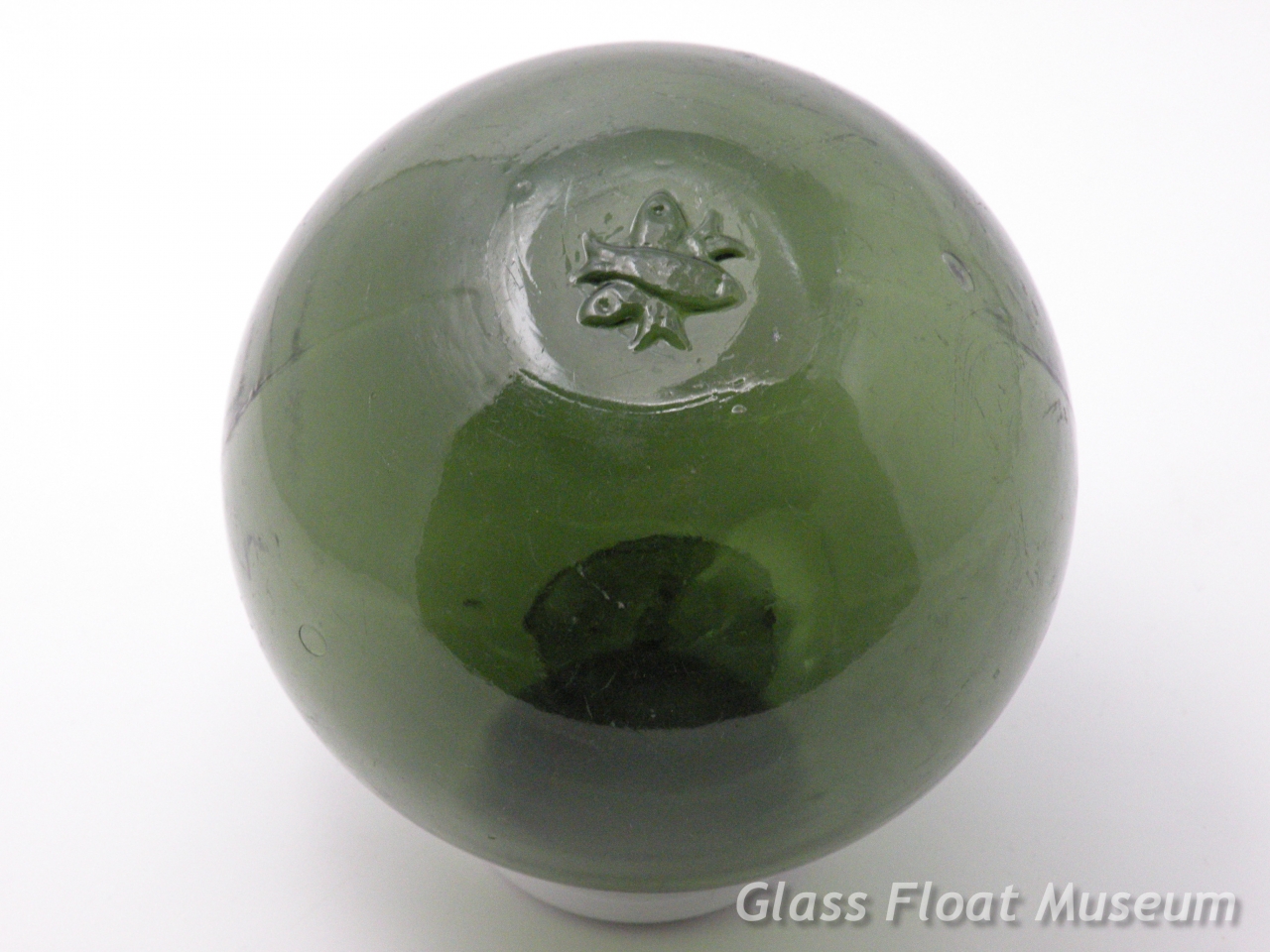Three Crossed Fish mark on a 5 inch Euro float.
For more information, go to Tom Rizzo's blog 'The Sea Hermit' and link to the article dated 1/7/09 that's titled 'Three Crossed Fish Mark'.
https://seahermit.blogspot.com/2009/01/three-crossed-fish-mark.html
Here's an excerpt:
"The last one opened was the Three Crossed Fish.
Looking at it, I could not help but admire the beautiful workmanship of the embossing. The engraver who designed the stamp was a true artist. The heads of the fish are cleanly lined, with well-defined and indented eyes, mouth and raised gill plates. The bodies have depth. They are not "flat fish," and beautifully overlap one another, with scales leading to sharp and separated tailfins. Each side of the tail has four segments, defined by fin lines.
The seal has a very nice rim around the fish, and the person who pressed the seal tool into the gather of molten glass was careful, and centered the mark perfectly.
The float was blown into a 2-part mold, the glass slightly amber/green with a good thickness and heft, and just a couple of wear marks. There are a few nice bubbles in the glass. The float rests perfectly by holding its seal up. The color of the glass, leads me to believe that this is a German-made float.
During the next three years, I saw a number of Three Crossed Fish floats offered for sale on Ebay auctions, on Ken and Cindy Busses' Gems of the Ocean Website, and both Vebjorn Fidsdal and Per Einar Gunnarsen offered a few they had found in Norway. I think all of them were top of the float embossing, except for one very interesting example that is for sale on Ken and Cindy's site.
Recently, Bob Buffington brought up the subject of the two different markings. He wondered if the raised seal mark was the older of the two? Having only seen the body embossed marking in photos, it was hard to know how to answer his query. All I could talk about was the quality of the marking on my float, and how the body embossed marking that I had only seen in photos, did not seem as well defined. Then in December, my friend once again offered me the chance to purchase one of the type not in my collection.
I jumped at the chance, and a couple of weeks later it arrived. I can finally come to a conclusion or two about the differences and the similarities of the floats.
This new one is also blown into a two-part mold with a separate seal button. The color, heft and thickness of the glass look and feel the same to my hands. And once again, I feel that the color and look of the glass are German. The markings are very different."
I find that the new float's three fish are smaller in length. The heads and bodies are raised and fairly well-defined. There are the impressions of scales on the top fish's body, but the tails are simpler, much less artistically carved, without the sharp delineation between the segments and halves of each tail. The fish heads do not stand out as cleanly, the mouths and gill plates are hardly evident. My impression is that this mark does not exhibit the artistic ability of the engraver of the seal marked tool.
